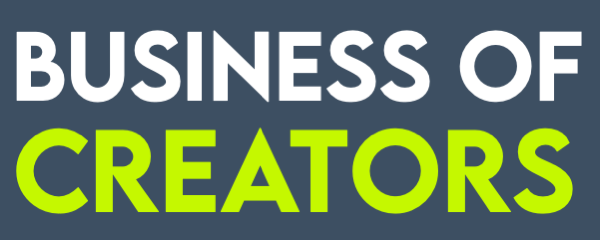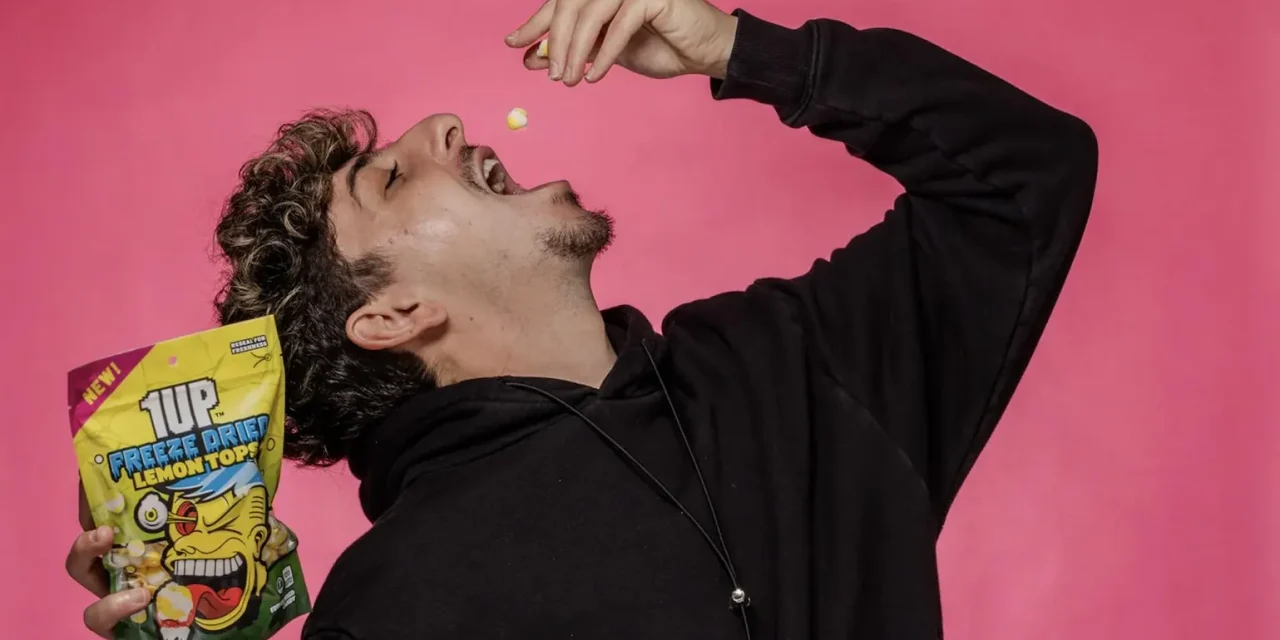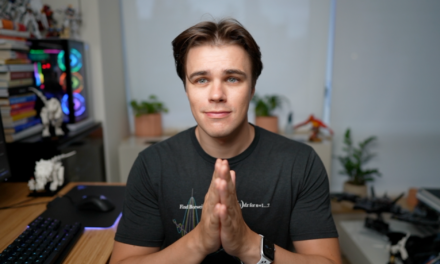Can a freeze-dried sour strip go viral on TikTok, land a Walmart deal, and spark a new wave of creator-led consumer products? OneUp Candy just did it—and they’re only getting started.
Why Candy? Why Now?
In an industry dominated by legacy brands and stale innovation, OneUp Candy is going unapologetically bold. Their goal: make candy fun again—and do it for Gen Z and Gen Alpha.
“Non-chocolate candy hasn’t changed in 100 years,” said Michael Schenker, co-founder of OneUp. “There was no brand that felt authentically owned by Gen Z. That was the white space we saw—and we jumped on it.”
Schenker, alongside Chris Koch and Matt Weiss, leads a venture studio that creates consumer brands backed by creators. Their first big bet: reinventing candy through a sensory-driven, socially viral product. OneUp launched with a sour gummy challenge that quickly racked up over a billion impressions on TikTok—without paid media.
The virality got Walmart’s attention. Fast forward a few months, and OneUp was on shelves nationwide.
This conversation is part of the Creator Commerce series Brought to You by .store Domains
Launching a product line? Start with a .store domain — the go-to web address for creators selling online. Top names like MrBeast, Dude Perfect, and Colin & Samir trust .store to build sleek, memorable URLs like YourName.store that drive traffic and sales. Get yours today at go.store/boc7.
The Creator Co-Founder: FaZe Rug
To win with Gen Z, the OneUp team knew they needed more than just a great product—they needed a face and voice that resonated with the audience. Enter FaZe Rug, a YouTuber with over 30 million followers and deep roots in the gaming and prank content that Gen Z grew up on.
“Rug had an authentic love for candy and had already posted about it for years,” said Koch. “He wasn’t just a celebrity license—we brought him in as a co-founder.”
Rug was involved from day one, flying out to try flavor prototypes and giving product feedback. But he also went further—joining buyer meetings, promoting launches across his channels, and embedding the brand into his weekly content cadence.
“He’s not phoning it in,” said Schenker. “His fans are like family. That authenticity makes all the difference.”
“The creator is the accelerator—but the product has to stand on its own.”
—Michael Schenker
Why This Creator Model Works (and Sometimes Doesn’t)
The success of creator-backed brands like Prime (Logan Paul & KSI) and Feastables (MrBeast) has sparked a wave of celebrity-CGP startups. But Koch and Schenker are quick to stress: a famous face isn’t enough.
“The business has to solve a consumer problem,” said Schenker. “Retailers are buying into the creator model—but repeat purchase depends on product, not hype.”
Here’s what they look for in a creator partner:
- Authenticity: Is the product a natural fit for their audience and content?
- Aptitude: Do they understand storytelling and conversion?
- Engagement over reach: Follower count is nice; real influence is better.
- Appetite: Are they ready to be in the trenches—joining calls, sharing feedback, and actually building?
To incentivize involvement, OneUp structures deals with both equity and royalty upside, vesting over time.
From TikTok to Walmart in 90 Days
The team’s first real hit? Freeze-dried sour strips—a quirky, crunchy twist on a popular candy format. Inspired by TikTok trends and the rise of freeze-dried Skittles, OneUp moved fast.
“In January 2024, we pitched the idea to Walmart. We didn’t even have supply chain sorted yet,” Schenker recalled. “By May, we were on shelves nationally. It was insane.”
Behind the scenes were logistical fire drills—scrambling for faster boats, vetting manufacturers, and learning how to scale a national CPG brand in real time.
“We had to figure out supply chain on the fly. There was a point where we weren’t sure we’d make it.”
—Michael Schenker
UGC, Virality, and Limited Drops
OneUp’s marketing strategy leans heavily on user-generated content and creator seeding, not paid ads.
Their viral “Sour Gummy Challenge” and “Sour Sweeps” campaign with Circle K generated massive traction, thanks to community engagement and a simple but powerful insight: people love watching each other suffer through sour candy.
Now, they’re planning DTC limited drops to test new products and gather feedback—while retail remains the core channel (where 95% of candy is bought).
Beyond Candy: Building a Consumer Brand Studio
OneUp is just the beginning.
The venture studio behind the brand is already developing new products in protein and kids’ nutrition, using the same model: identify an unmet consumer need, validate it with data, and bring in the right creator as a co-founder.
Upcoming launches include:
- Clear whey protein powders and RTDs
- Kid-focused protein snacks in snack bar formats
- A new Mexican-inspired gummy candy line
“We’re always looking at Amazon rankings, ingredient trends, and category gaps. That’s where the ideas start.”
—Michael Schenker
What’s Next for Creator-Led Brands?
While creator economy hype has cooled in some corners, the team sees the model only getting stronger—especially outside of oversaturated categories like beauty and alcohol.
“We’re interested in the less sexy categories,” said Koch. “Where there’s real white space, and the right creator can actually make something grow.”
Looking ahead, they believe the winning brands will be those that balance:
- Real product innovation
- Audience alignment
- Hands-on creator involvement
As Schenker put it: “If the talent is truly invested—and the product solves a real problem—you can build something that lasts.”






